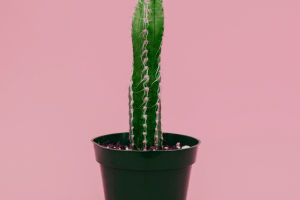Succulent plants are a type of plant that is mainly characterized by storing water.
They are loved by gardening enthusiasts because of their various shapes, strong adaptability, and easy maintenance.
Succulent plants usually grow in arid or semi-arid areas. They store water through thick leaves, stems, or roots to survive in dry environments.
The succulent plant family is large and diverse, with great diversity from shape to color. Therefore, they are not only suitable for outdoor cultivation but also very suitable as indoor ornamental plants.
Succulent plants are very tenacious and can survive in extreme conditions. Their leaves are usually thick and often covered with a layer of wax on the surface to reduce water evaporation.
In addition, succulent plants often have stomata on their leaves, which close during the day and open at night to avoid excessive water loss due to high temperatures during the day.
It is these unique adaptation mechanisms that make succulent plants "survival experts" in arid areas. For example, cacti are typical succulent plants. Their stems can not only store a lot of water but also have evolved needle-shaped leaves to reduce evaporation.
In gardening, the cultivation of succulents is becoming more and more popular. They have become part of the plant decoration of many people's homes due to their various shapes and easy maintenance.
Unlike many other plants, they do not need to be watered frequently, which is suitable for busy modern people.
They can grow very healthily as long as they are provided with sufficient light, moderate moisture, and a good drainage system.
In addition, succulents usually grow slowly, which also means that they do not need frequent pruning or repotting, which makes them an ideal choice for beginners and experienced gardening enthusiasts.
There are many types of succulents, ranging from tiny mini plants to huge outdoor landscape plants. Common succulents include Crassulaceae, Agave, Cactaceae, etc. Sedum plants, such as Jade Dew and Echeveria, are known for their elegant leaf arrangement and gorgeous colors.
Their leaves are lotus-shaped, ranging in color from dark green to pink and even purple, often giving people a strong visual impact. Plants like Agave are loved for their sharp, long leaves and strong sense of shape, and are often used in modern garden design.
The diversity of the cactus family is even more important. From tall, straight columnar cacti to round, spherical species, each cactus is full of unique charm.
In addition to ornamental value, succulents also have certain medicinal value. For example, aloe vera, a common succulent, has been used to treat skin problems since ancient times. The gel-like substance in aloe vera leaves can soothe skin burns, mosquito bites, and other problems.
Although succulents are often considered "lazy plants", it is not completely without challenges to keep them well. Controlling the amount of water is key. Succulents are more afraid of overwatering than drought. Too much water can cause their roots to rot.
Therefore, when watering, it is best to wait until the soil is completely dry before watering. At the same time, although they are drought-tolerant, they also need enough sunlight to maintain growth. For succulents grown indoors, make sure they receive plenty of natural light every day or use artificial light to supplement it.
The uniqueness and diversity of succulents have earned them a place in the gardening world. Not only can they add greenery to indoor and outdoor environments and bring a fresh natural atmosphere, but they have also become a decorative choice in modern home design because of their various shapes and rich colors.
Whether you are a beginner in plant care or an experienced gardening enthusiast, succulents can add a touch of color to your life.


